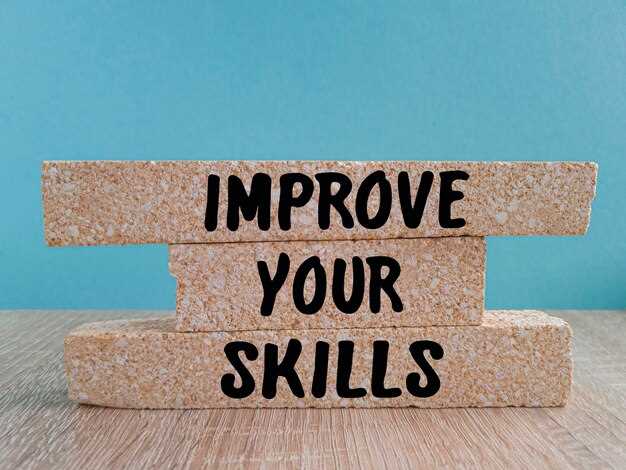Recommendation: Pause when an online match replies with generic lines, and keep a personal log of patterns you notice. These notes help you distinguish genuine intent from deception and avoid chasing momentum that leads nowhere. Each entry should record what you liked, what you rejected, and the context in which it happened; these details sharpen your understanding of what you want toward a meaningful connection.
Step 2: Prioritize personal growth over chasing flawless matches. Read credible advice, practice direct communication, and invest in activities that boost self-awareness. weve learned that a stronger sense of self raises your capacity to evaluate compatibility, and that a higher level of confidence changes how people respond online. these shifts reduce upset when conversations stall and increase alignment with people who share your core values.
Step 3: Gather input from trusted people. Ask for focused feedback on your messages and on how you present yourself online. Use concrete questions such as “Does this tone feel respectful?”, “What would you do differently?” This helps distinguish deception from genuine interest and keeps you from turning a poor date into self-pity or lament. The idea is to take the advice of those who know you and to separate ego from data, so you keep the process grounded in reality, not fantasy.
Step 4: Set clear boundaries in online dating and manage expectations. Limit app time to a defined window, require a real-world meetup before taking momentum seriously, and keep conversations anchored to specifics rather than romance fantasies. If you feel upset or pulled into self-pity, pause and reset; this preserves your state and prevents impulsive decisions that misread someone’s intentions. These measures help you stay aligned with your values and with the greater goal of connection rather than thrill-seeking.
Step 5: Track outcomes and decide when to step back. Keep a simple log of matches that progressed to real conversations and those that fizzled; if a pattern shows many near-misses, you can adjust criteria and slow the pace. This data-driven approach helps understand your progress toward a more satisfying connection, and it also reduces the pressure that leads to quick judgments. Remember that not every encounter has to be perfect to be instructive; these experiences shape your next, better approach.
Five Key Things to Do Before Letting Go of Finding Love
Set a boundary now: pause your dating conversations for seven days. Use that time to take stock of thoughts, identify your needs, and choose a path that feels least risky and safe for yourselves. Confirm your choice by writing it down.
Engage in focused reading and brief journaling to map patterns. When memories or thoughts are sent to your awareness, note them and identify the trigger.
Knowing your boundary matters; if someone pushes past it, turn away and stop engaging. Trust that pace and space protect your good.
Schedule low-pressure days and limit interactions with hype that feels like advertisement. If a chat goes gone cold, disengage and reallocate energy to things you like.
Dinner with a trusted friend or dinner alone can reinforce that you are worthy. Seek a moment of pleasure, acknowledge pain, and remind yourself that some moments matter for your survival.
Help us spread the word: practical steps to prepare for moving on with clarity
Publish a crisp five-item checklist today and invite readers to share their experiences online to increase visibility and accountability.
- Breathing and self-care anchor: start with breathing exercises for 5 minutes each morning plus a 3-minute grounding ritual at night. This reduces fears, improves focus, and keeps you in a calmer state. It seems simple, but it works when done consistently. If you notice tension, pause, drink water, and re-center. weve found this routine anchors stability during tough moments.
- Criteria for emotional readiness: write down 3–5 criteria signaling you’re ready to pursue new connections. Include a boundary, a logistics cue, and an indicator of inner peace. This makes your goal explicit and helps you avoid rushing into a fresh relationship.
- Boundaries with family and a former partner: tell family about your plan and how they can support you. Use concise messaging and ensure compliance with boundaries; avoid ignoring red flags. Avoid falling into a pleaser pattern–your aim is clarity, not appeasing others. If you interact with a husband or ex, keep messages short, respectful, and focus on practical needs.
- Practical plan to move ahead: set a daily routine that reduces online noise and increases real-life engagement. Schedule a 15-minute online check-in only once per day, and allocate 45 minutes to offline activities such as walks, journaling, or calls with a friend. Put in place an order for how you’ll handle contact after triggers; you’ll increase resilience and feel capable of moderating urges to linger in past patterns.
- Spread the word and invite feedback: post a short summary of your approach online and ask for constructive tips. Include your criteria, share what you tried, and invite others to tell what helped them. weve seen that public accountability, even a few likes, can reinforce new habits and cut down on horror stories that feed fears. If you hear criticism, stay cool, read it with intelligence, and adjust your message ahead of time; the goal is clarity, not perfection. If someone tells you a kiss of hope won’t help, ignore the comment and focus on self-care and practical steps.
Define your relationship goals and non-negotiables
Write down your non-negotiables and core desires. This list weighs benefits against compromises and serves as a practical filter for every encounter. Be specific: include values, boundaries, and deal-breakers, plus must-haves like honesty, reliability, emotional safety, and other priorities such as health and growth.
Develop a five-point screening script: whats non-negotiable on values, family, money, time, and personal space. Use this talk in early chats to reveal alignment; adjust questions if a potential partner avoids direct answers.
Establish a hard, clear go/no-go rule: if an item isn’t met, move on. Weighed decisions after several conversations reduce the risk of painful resentments and the horror of wasted time.
Assess how your desires align with a partner’s dreams; this intelligence helps you distinguish pretty stories from real compatibility. Watching behavior under pressure weighs more than smooth talk.
Keep an internal talk that avoids being a pleaser. Hard boundaries encourage mutual respect and reduce resentments; this clarity boosts your chance and protects you from toxic patterns.
Acknowledge and heal past heartbreak with a concrete plan
Start with a concrete task: write a 7-day recovery map that names what happened and what you want to learn from it. This keeps your lives focused on what you can control, even when circumstances feel heavy, and opens a path there for renewed momentum.
Open a private note and answer: what happened, what belief needs challenge, and what rest you’ll allow yourself today. Use this session to shed old narratives and set a fresh tone for what comes ahead.
Believe that progress is possible, with small steps and the support of a friend. Keeping the focus on daily pleasure and simple routines helps your world feel grounded, not overwhelmed.
Schedule a brief, non-negotiable daily practice: 10 minutes of reflection, 20 minutes outside, and a 15-minute check-in with yourself. If a moment feels off, do anything you can finish today, then rest and note what’s done.
Plan real social moments ahead: a lunch with a friend, a low-pressure date when you feel ready, and a moment for watching something uplifting. Returning to connection is likely to boost mood and confidence, because you deserve support and joy.
To sustain momentum, keep a small tracker and note what’s done, what’s next, and when you’ll return to these actions. There you will see ahead the path you can follow.
| Day | Action | Why |
|---|---|---|
| Day 1 | Acknowledge hurt; shed defenses; reach out to a friend | Starts support network and reduces isolation |
| Day 2 | Take a 20-minute walk; write in journal about triggers | Preserves rest while noting circumstances |
| Day 3 | Open up to a trusted person; set one boundary | Strengthens boundaries and belief in safer environments |
| Day 4 | Plan a simple lunch or cafe visit; avoid high-pressure dates | Reintroduces social pleasure in a manageable setting |
| Day 5 | Finish a small productive task; mark it as done | Reinforces momentum and a sense of progress |
| Day 6 | Watch a feel-good show or read a short piece; rest guilt-free | Restored energy supports next steps |
| Day 7 | Review progress with a friend; set one renewed goal | Creates continuity and a forward plan |
Set a realistic timeline for letting go and shifting focus
Start with a concrete, 90-day plan that centers your personal well-being and practical steps you can actually follow.
- Phase 1 (0–14 days): cut exposure to triggers. Limit swiping to a 15-minute window daily. Mute or pause conversations that keep you attached. Keep a personal journal to capture what triggers attachment and what helps you feel grounded, increasing your understanding and reducing blame toward yourself. Recognize the same patterns may show up; this is the start of meaningful change.
- Phase 2 (15–30 days): reframe interactions and meet real-world connections. Replace longer digital moments with short, supportive conversations with a trusted friend. This helps you see that you could respond differently and that most progress begins with small, manageable steps. Decades of habit may surface, but the plan supports steady change.
- Phase 3 (31–60 days): build daily routines and skills. Add two activities you enjoy, such as a weekly workout or a creative project. Track progress in a simple log and note how your mood improves throughout the week. The renewed story you tell yourself gains traction even though results take time.
- Phase 4 (61–90 days): evaluate and adjust. Review what worked and what didn’t, and plan next steps that sustain momentum. If you feel attached, acknowledge it without blame and remember theres message in every pause that can guide you toward a better sense of well-being. Consider continuing to meet new people in low‑pressure contexts while staying mindful of your own limits.
There is guidance from warrell, an experienced coach who has helped many navigate personal growth. The approach emphasizes clear milestones, practical conversations, and steady progress that supports your well-being. By understanding your patterns and trusting the process, you can move forward with sure footing and a renewed story about your life.
Build self-worth and personal growth through targeted actions
Do a 10-minute self-care ritual daily to boost self-worth and set a clear boundary for your time. In the middle of a busy day, look at what you’re about and noticing your thoughts; likely, this awareness guides you toward steadier choices.
Commit to a concise routine: 20 minutes of exercise on most days and a short yoga sequence to ground energy. Keep a simple meal plan that stabilizes mood–protein with greens at noon–to support focus and self-discipline. This routine keeps self-love alive by proving you can care for yourself even under pressure.
Use a daily reflection to grow intelligence about your triggers and responses. Think about whether your actions align with an envisioned self; realized gains come from consistent practice. Noticing small wins helps you stay motivated and see progress. Reflect on what you’ve experienced to choose steps that fit you.
Limit interactions with people who add pressure or drain energy; when a chat becomes closed or tense, pause. Return to your boundary and continue with a prepared alternative, such as stepping away or changing topic.
Document what was taken from your old patterns and what you gave yourself in self-care today. Wasnt sustainable? Revise the method; if an approach wasnt aligned with reality, you envisioned new routines and realized better outcomes. The path isnt forever; you can adjust as you go.
Establish a support network and accountability for your journey
Pick 3 to 5 trusted people in your town who will actually hold you to honest standards. Name roles: the candid mirror, the steady listener, and the practical coach. Arrange weekly 20-minute check-ins for at least four weeks, then adjust. In each interaction, report one concrete win, one setback, and one action you’re ready to keep next week. This approach works and cant be reduced to wishful thinking; it keeps stress manageable and turns progress into concrete steps. Keeping the cadence simple increases adherence and keeps momentum going.
Define precise expectations and boundaries. Tell your circle you want honesty, not pleasantries, and that you value speed over polish. Ask whos role is to call out blind spots and give specific feedback: what would you change, what would you stop, and what would you start. If someone’s tone feels heavy, switch to a follow-up message. Honest feedback genuinely supports your well-being and helps you see where you are slipping, so you can adjust without spiraling.
Set a cadence for accountability and decide how to handle interruptions. Use a simple shared sheet to track stress, the quality of interactions, and whether you maintained boundaries. Note early signals when you slip into people-pleasers, and record what you choose to do differently next week. Review the numbers in your weekly call and celebrate what truly works, not what sounds impressive. The experience you receive from consistent checks reinforces better choices.
Keep the tone constructive: cant take every comment personally or assume wrong motives. If feedback triggers stress, pause, breathe, and schedule a calmer follow-up. Seeing steady improvement over weeks proves the method is effective and helps you keep moving toward happier interactions and greater self-trust.
Avoid sliding back into people-pleaser habits. If you notice you’re saying yes at the expense of your own needs, name it in the circle and shift focus to what you genuinely want. For a bachelor starting fresh, this external check‑in becomes a crucial guardrail: it keeps you from rushing into a bad date or slipping into self-pity. Seek a mentor who can share experience you received and won’t drain your energy. Find someone who genuinely loved growth and will call you out when you drift.
Expand the network gradually. Attend a local meetup or club in your town to meet people who share your values, and invite one or two to join your accountability circle if appropriate. Broaden your sources so you hear diverse perspectives and reduce bias. When you’re ready, interactions become more authentic, and your overall well-being improves as weeks pass.
Keep the circle nimble: if someone stops contributing, replace them with another who demonstrates genuine care and honest intent. The result is clearer honesty, steadier progress, and a sense that you’re truly ready to choose what serves you best rather than chasing validation.





